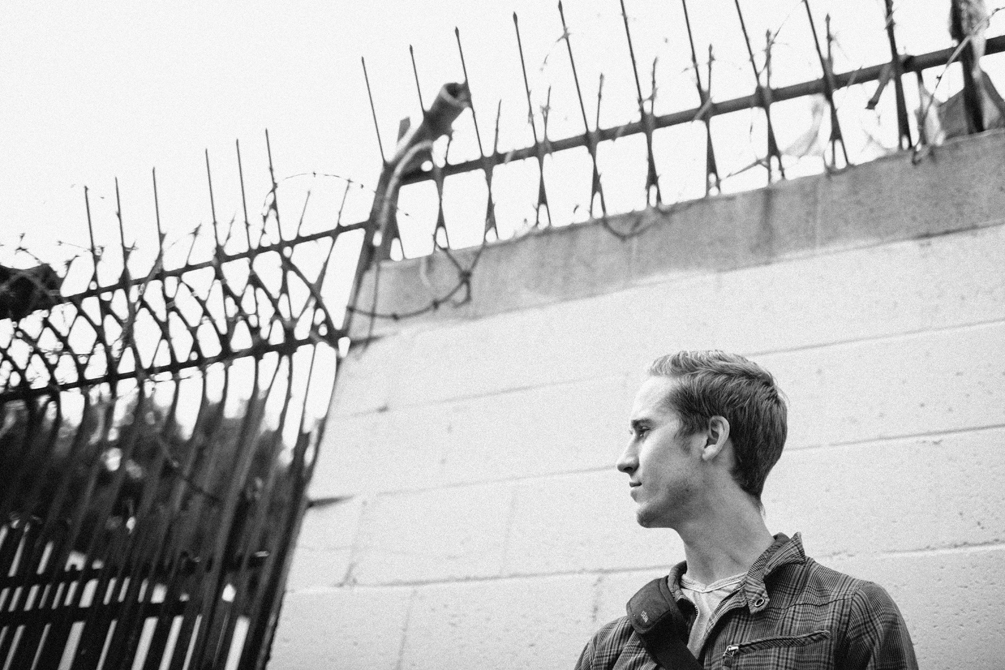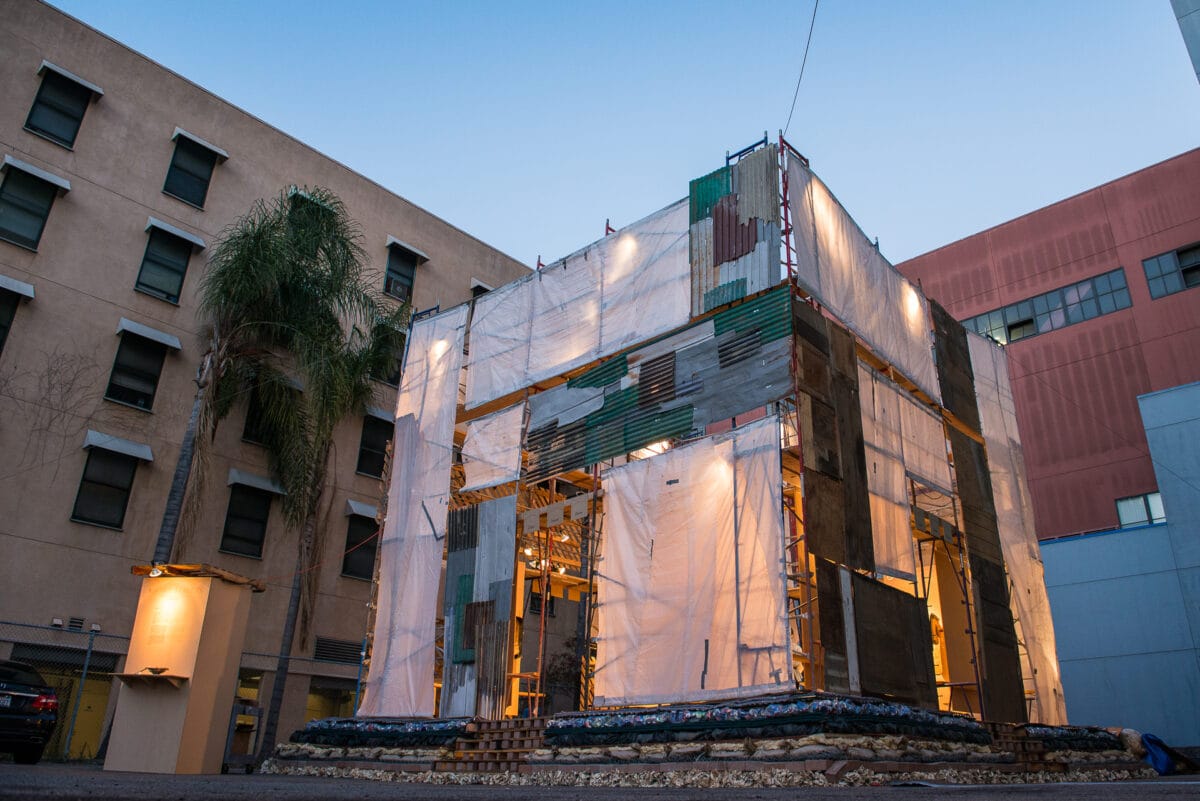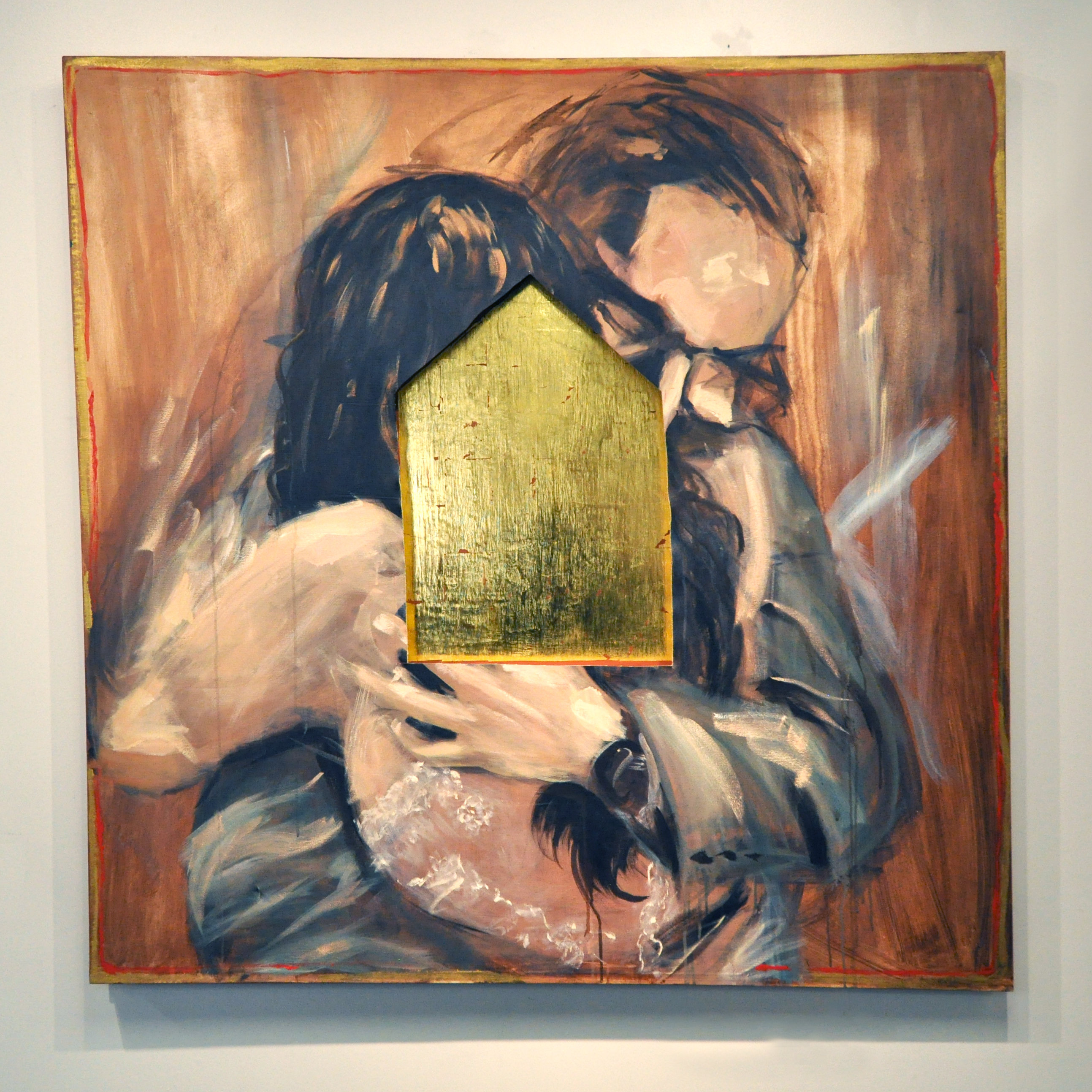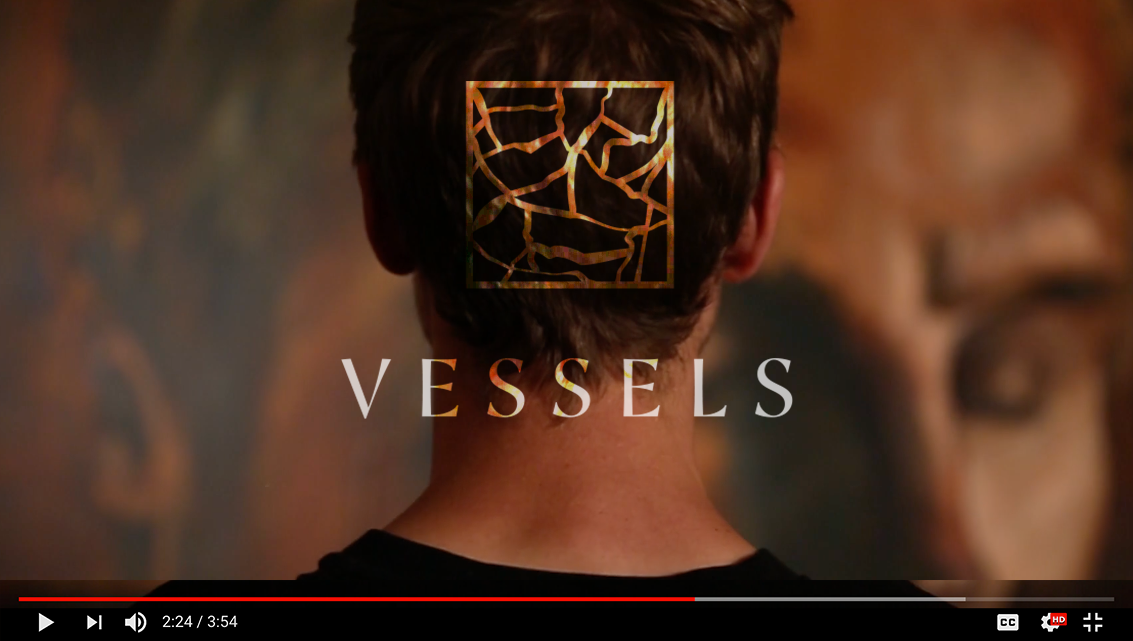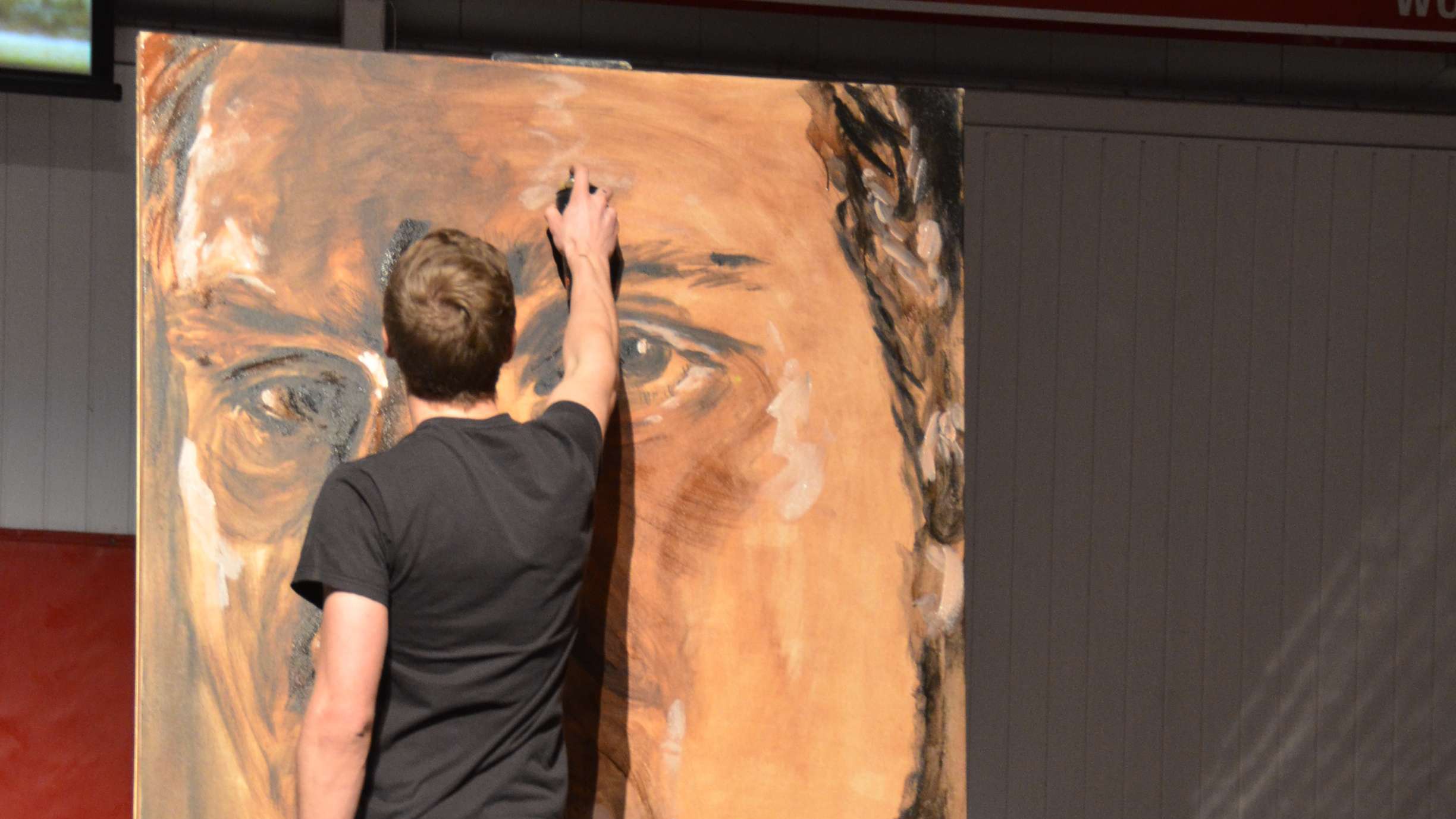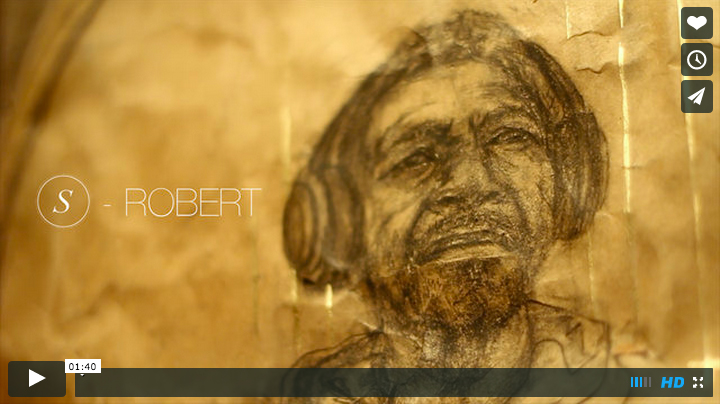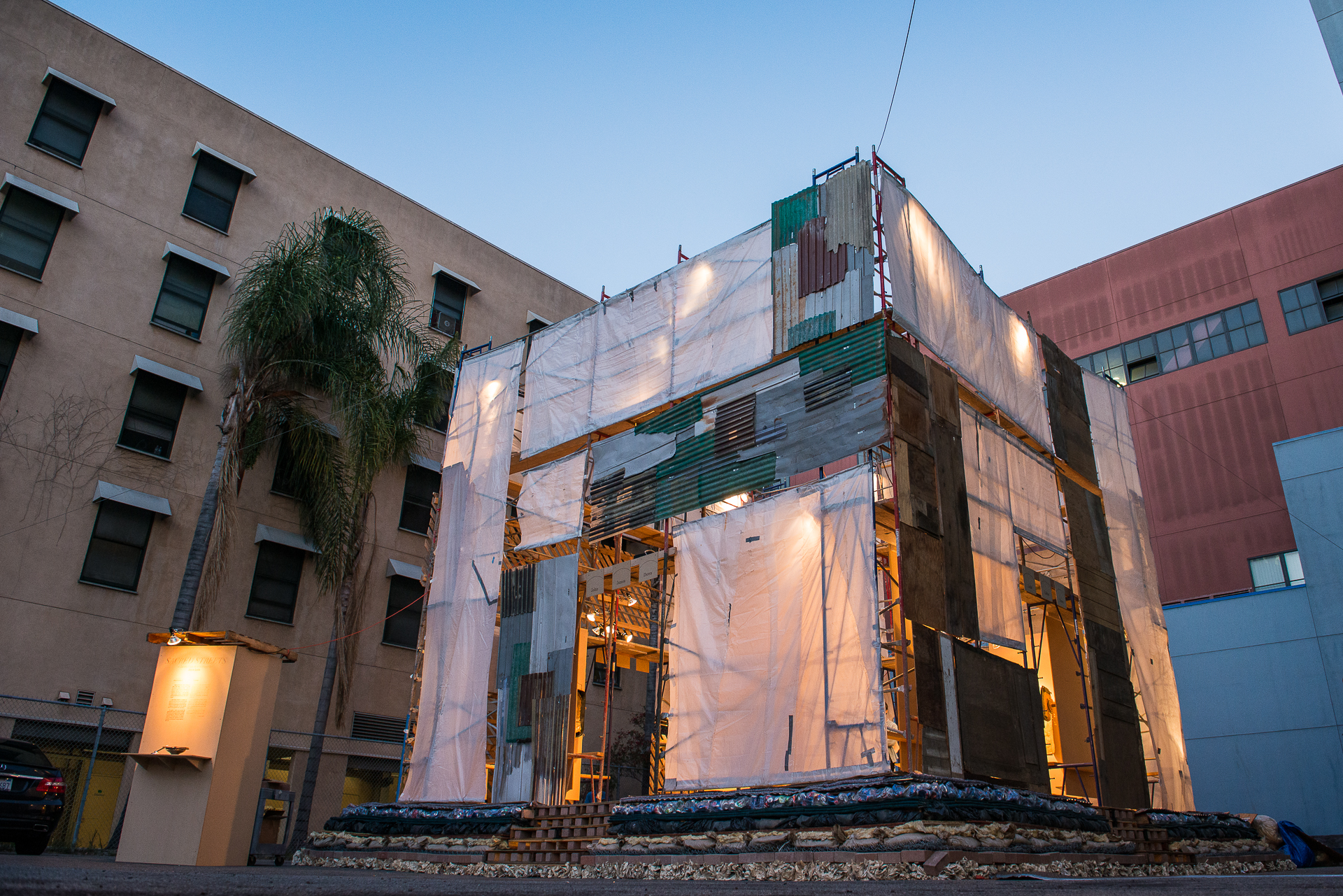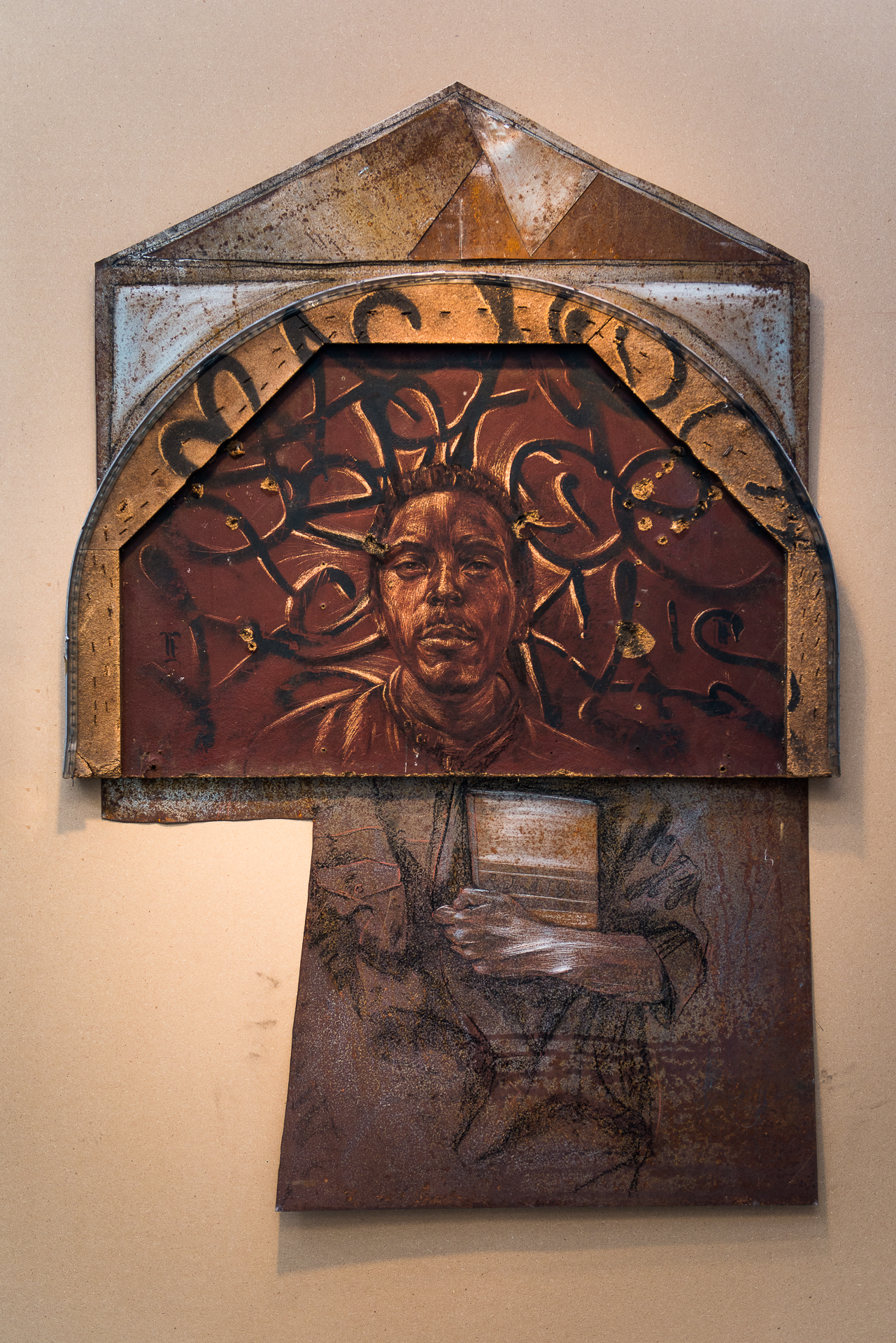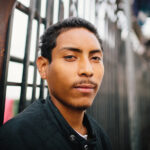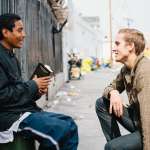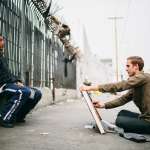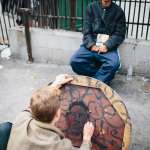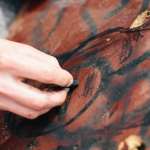Artist Statement
I begin on the street level, walking past tents, trash heaps, and soup lines on skid row, drawing materials in hand. I want to know the individuals from this community on a personal level, and the best way I know of connecting is to make portraits. To draw a person, in person, is for me a means of being present and attentive.
I make the portraits on reclaimed objects from the very streets where I meet people. And in the end, I’m interested in the possibility of re-imagining the world and the people I meet in terms of a deep and pervasive sacredness.
The built space in which these portraits are placed further stands as a symbol of the beautiful collision of the sacred with the mundane. Its components are informed by scriptural descriptions of the most sacred of all spaces in the end of time where things are “made new.”
Exchange
For millennia, artists have created paintings and sculptures of saints, both to reflect on their lives and what they can teach us and to show honor back to them. For Sacred Streets, we invited viewers to interact similarly with the people represented in the portraits.
As people spent time with the portraits and stories, they wrote down what they saw and received in these images. They placed them in the receptacles below the portraits they felt drawn to.
After the show, these notes were given directly to the people to whom they were written.
— JASON LEITH
Sacred Streets Team:
Jason Leith — Artist, Director, Vision
Jessica Airey– Public Relations
Olivia Blinn– Photography
Jessica Byrd– Building Project Manager
Hannah Efron–Building Team
Adam Hillyer– Video
Jori Johnson– Building Project Manager, Coordinator
Nicole Leever– Building Team
Steven Reynolds–Web Design
Norma Santamaria–Graphic Design
Nathaniel Smith– Building Team, Design
Skid Row Exhibit
[tabgroup]
[tab state=”active” title=”Symbols”]This temporary structure is being built to house the 12 portraits of the people I meet on the streets. It also stands as a symbol of the beautiful collision of sacred and earthly. By recognizing and arranging humble earthly objects in these specific dimensions, they represent a space of hallowed consecration. This construction is not about adding some specific quality to what is lacking, it is a matter of revealing life and vitality to what was there all along. Some of the materials include: cardboard, wood, metal, dirt, asphalt, tent material, clothing, newspaper, plastic bags, and chain link fencing. But just as the portraits, these materials will find new value, even beauty, as they are reclaimed and repurposed.[/tab]
[tab title=”Involvement”]This exhibition is being built primarily with the Skid Row community in mind. By putting it just outside of Union Rescue Mission on San Julian Street, the Skid Row community will have it right in their midst. There is much more in mind for this community than just drawing their portraits– one way this will all be coming together is by having them help us put the Structure all together in the days leading up to the show.[/tab]
[/tabgroup]
Process
[tabgroup]
[tab state=”active” title=”Process”]My process begins on the street level, walking past tents, trash heaps, and soup lines on skid row, drawing materials in hand, earnestly searching for the right person to engage with. All of these portraits were drawn sitting with the subject, face to face, on the streets. For me, to take time to sit and draw a person, in person, is a vehicle for connection, much of the time without any words at all. I don’t want to just draw the people from this community. I want to know them on a personal level, and instead of donate food or money, I want to donate an ennobling, dignifying experience. By sitting with them eye to eye for hours, just taking in their presence and capturing their essence in artistic expression, an intimate exchange occurs– they are releasing themselves, bearing their lives in an act of transparency, and in turn, receiving a dignified expression of their being.[/tab]
[tab title=”Materials”]I draw the portraits on reclaimed objects that are meant to tell a story parallel to the people depicted, a story of being found again and renewed. As the portraits come to completion I integrate shapes, symbols, and materials that resemble traditional images of saints and icons you would see in a cathedral, usually placed as altarpieces or objects of veneration. In this way, the portraits further the concept of restored beauty and become a sacred calling.[/tab]
[/tabgroup]
Vessel no. 6
Vessels Video
Vessels | Artist Statement
What can I tear down? Could a breaking release what lies within the confines of this vessel?
My practice is centered around portraiture that explores the intersection of humility and holiness. It is a response to writings like St. John’s that remind us that “we are not the Light, but we are witnesses to the light.” The portraits embody and act of sacrifice through the grueling process of constructing the canvas frames, hinging the measured icon windows, and laying gold using an ancient water-gilding technique.
These pieces are also a record of performance in public spaces. After the final strokes, the portrait is slowly and painstakingly cut down the middle using a handsaw or knife, and opened. The shapes of the openings reference sacred icons and altarpieces. In the culmination of the performance I step back to reveal a portrait obscured by the gold gilded interior.
Onlookers initially wondered, “Why ruin it? Is this what we’re called to do? Cut ourselves open?” One woman, after a performance in Altea, Spain asked, “Why sacrifice if it’s painful?” Her answer was found in the newly exposed and gleaming gold surface.
After entering into marriage in year two of this project, I felt such an intertwining of identity with my spouse that I couldn’t help but bring her into the self-portraits. The humble sacrifice now involved two people in relationship. It became communal.


